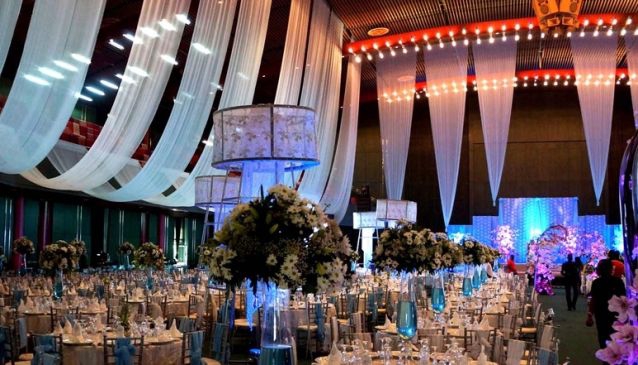
09 Jun “How will event look like after Lockdown” – Any Professional Event Planner Will ask
The most pressing question on event professionals’ minds is what events will look like once the lockdowns have been lifted. We explore some potential scenarios of the aftermath of Covid-19.
The event industry remains one of the hardest hit by the coronavirus crisis. A lot of uncertainty remains on the future of meetings and events.
We have extensively covered how events are one of the few proven vehicles for spreading the virus. The pressure on the industry is at all-time high.
Some companies such as Microsoft have announced plans to suspend all live events until July 2021. Facebook joined the strategy by announcing the cancellation of all meetings above 50 attendees until June 2021.
Our current coronavirus recovery timeline reflects a scenario where things are frozen for the next few months.
Is that it?
The Conditions for Events to Happen
One of the underlying conditions for events to take place is that the host country has entered what is commonly referred to as a ‘phase stage’ of the virus containment.
Phases refer to relaxing the virus containment controls, after the initial lockdown measures to flatten the curve show the first positive outcomes. Cases go down, hospitals start to breathe again.
-
This is surely the most discussed item on the agenda of many countries. With some saying opening up too soon may drive countries into relapse and others that keeping things closed may lead to a more substantial toll to pay for economies.
Last week, the US government released guidelines that break the return to normalcy into three phases. The Opening Up America Again document gives general principles that will apply to all future phases of business recovery, and that seem pertinent for events:
- Social distancing and protective equipment
- Temperature checks and other testing
- Isolating, and contact tracing
- Sanitation and disinfection of common and high-traffic areas
- Policies and procedures for workforce contact tracing following positive coronavirus tests
We can expect these phase one requirements to be in effect for any business activity to resume. Within phase one (the most immediate post-lock down phase, currently scheduled for April 30, 2020 in most states), many of these conditions make event planning very complicated if not completely impracticable.
What Events Can Be Planned During Phase Two?
The hint is clear. Large events will suffer more than smaller events. Size will matter through 2020 and potentially into 2021.
Facebook adhered to the US guidelines by canceling all live events of more than 50 people until June 2021.
-
When we say that small events are the immediate future of our industry, we are referring to meetings of 50 people max. Anything above that is too risky or complex to plan.
There is still some degree of confusion about the guidelines as the relaxed measures on venues may invite questions on how, for example, a movie theater could host more than 50 viewers at a time with moderate social distancing in place.
Relaxing nonessential travel restrictions could free up domestic long-range travel to meetings across the country, but almost inevitably virtual events will prevail over the risk of exposing attendees to travel with the virus still circulating in some capacity.
International travel will still suffer for a while with countries implementing different quarantine strategies. It is unlikely that attendees will be willing to potentially undergo 14 days of self-quarantine to attend a one or two-day event.
Therefore, the meetings that will take place in person will need to have a very strong reason to happen. They will be limited to domestic events and have virtual alternatives as a replacement until a breakthrough (vaccine, herd immunity or cure) materializes.
One trend that will define the recovery of events will be venues that step up their distancing practices. In fact, a partner that implements all of the above for you adds an immediate layer of security that may relax the level of insurance risk you take.
For event to happen there must be:
Thermal Scanning
Sanitation and Disinfection
- Hand washing. Signage will need to be offered at the venue instructing them to wash their hands. This will need to be complemented by pre-event communication and push notifications via event apps.
- Hand sanitizing. Hand sanitizer will need to be sourced when not provided by the venue and made available to attendees. If you plan a swag bag, hand sanitizer will be a must-have as well as a sponsorship opporunity.
- Personal protection equipment (PPE). This will be key for your staff but also for your attendees. You will need to provide face masks to your staff and either invite attendees to bring their own or provide them on site.
- Common room sanitation. Check with your venue about the frequency and quality of sanitation of high contact surfaces. A new normal may include sanitation of the conference room during breaks, which could add layer of delays to your content programming.
- Hotel room sanitation. If you provide accommodation for your event with a room block, the hotel rooms will be as much of a sanitation consideration as the event areas. Asking the hotel what they are doing to provide a virus-free environment and communicating the measures to attendees will be key.
- AV equipment, lanyards, swag bags. These are only some of the elements that will need to be sanitized constantly before being accessed by staff and before being shared with attendees. Working with suppliers that have a virus management strategy may lower your burden.

No Comments